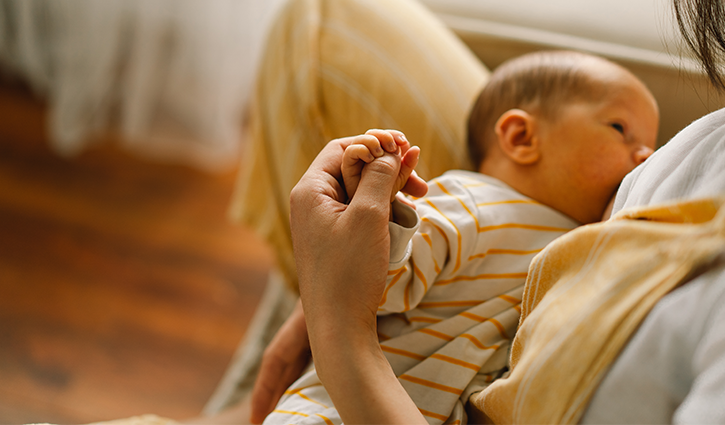

To ensure that the start to your breastfeeding journey is as comfortable as possible for you and your baby, there are several things you can do to prepare.
If this is your first baby, and you’ve possibly never even held a baby recently, it’s important to learn the art of breastfeeding. Even if you sat through some antenatal classes, they don’t adequately prepare new parents for the reality of caring for a baby.
It can be overwhelming and stressful trying to figure out breastfeeding once your bub comes along, and you’re both recovering and healing from the birth. Therefore, learning about breastfeeding before your baby is born is the first step to helping you understand normal newborn behaviour and in reaching your breastfeeding goals.
Preparing for Breastfeeding
In preparing for breastfeeding your baby, the best thing you can do is to ensure that you’re educated, supported, and have the necessary items that make nursing a newborn that bit more manageable and convenient. This includes the following:
- One of the most important skills that a new mum and baby have to learn together is how to position and attach the baby to the breast. Read our article How to correctly latch your breastfeeding newborn for a detailed, step-by-step guide.
- Look at the best breastfeeding positions for newborns. You might like to watch some YouTube videos on how to position babies, and perhaps practice different positions using a doll or teddy. Read up on the benefits of paced bottle feeding.
- Breastfeeding discomfort is common in the early weeks as you get the hang of it, so it’s a good idea to stock up on some cooling and soothing compresses to help with sore and cracked nipples.
- Also, stock up on reusable or disposable nursing pads to keep leaks under control while you’re trying to work out when and how to feed your baby.
- Find your support network, and if you have a partner, ensure that they’re educated on how they can best support you. You might like to join the Australian Breastfeeding Association, which has local groups you can attend, and a Breastfeeding Helpline you can call for information and support.
- Line up a lactation consultant before your baby comes. Even if you think things are going well, it doesn’t hurt to see one to check your latch and answer any questions you have, plus provide some emotional support if you’re finding it difficult. You can ask the ABA to recommend a local one.
- If you have a planned or emergency C-section, it’s possible to breastfeed successfully. Read our tips here to help you.
- Get yourself some comfortable nursing bras/tanks, button-down pyjamas, and feeding tops to make the process more convenient.
- Decide where you’d like to feed in the home. Some mums just use the bed and/or the couch, and whilst you can breastfeed anywhere, you might like a feeding chair to have your own feeding safe haven with your bub. Make sure you have all of your feeding essentials to hand, including burp cloths, a water bottle, nourishing snacks, and phone charger. Invest in a good breastfeeding pillow, they are designed to perfectly position baby for latch-on while supporting your back and give you the support you need to rest baby on.
- It’s a good idea to have a breast pump even if you don’t think you’ll be expressing. Sometimes mums need to increase their supply by pumping, or they decide they would like someone else to take over some of the feeds. Having a store in the freezer just may come in handy one day. Have a look at our Top 10 breast pumps for 2021.
You might also like to read the following articles so that you’re even more educated and prepared to breastfeed your baby:























